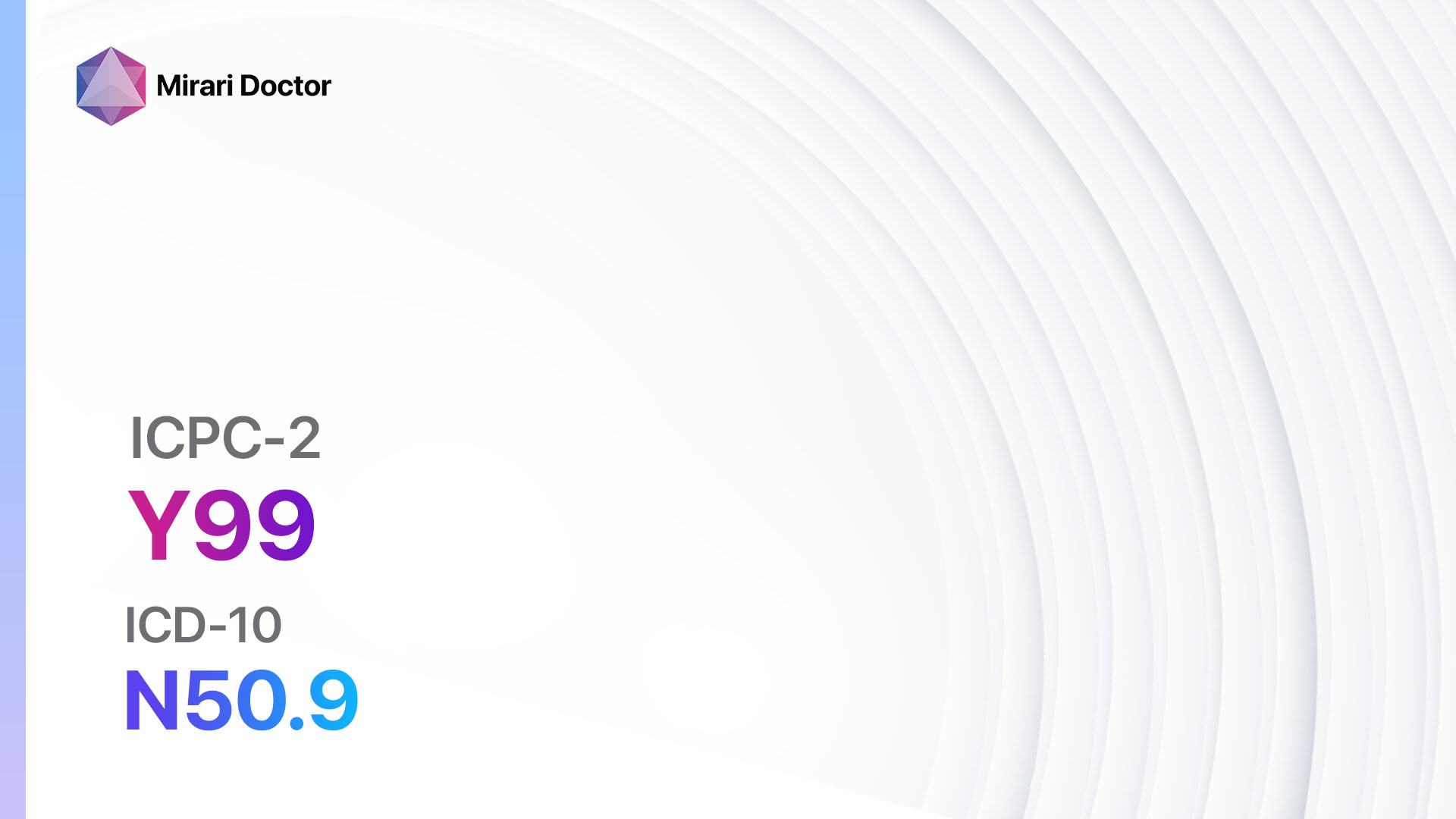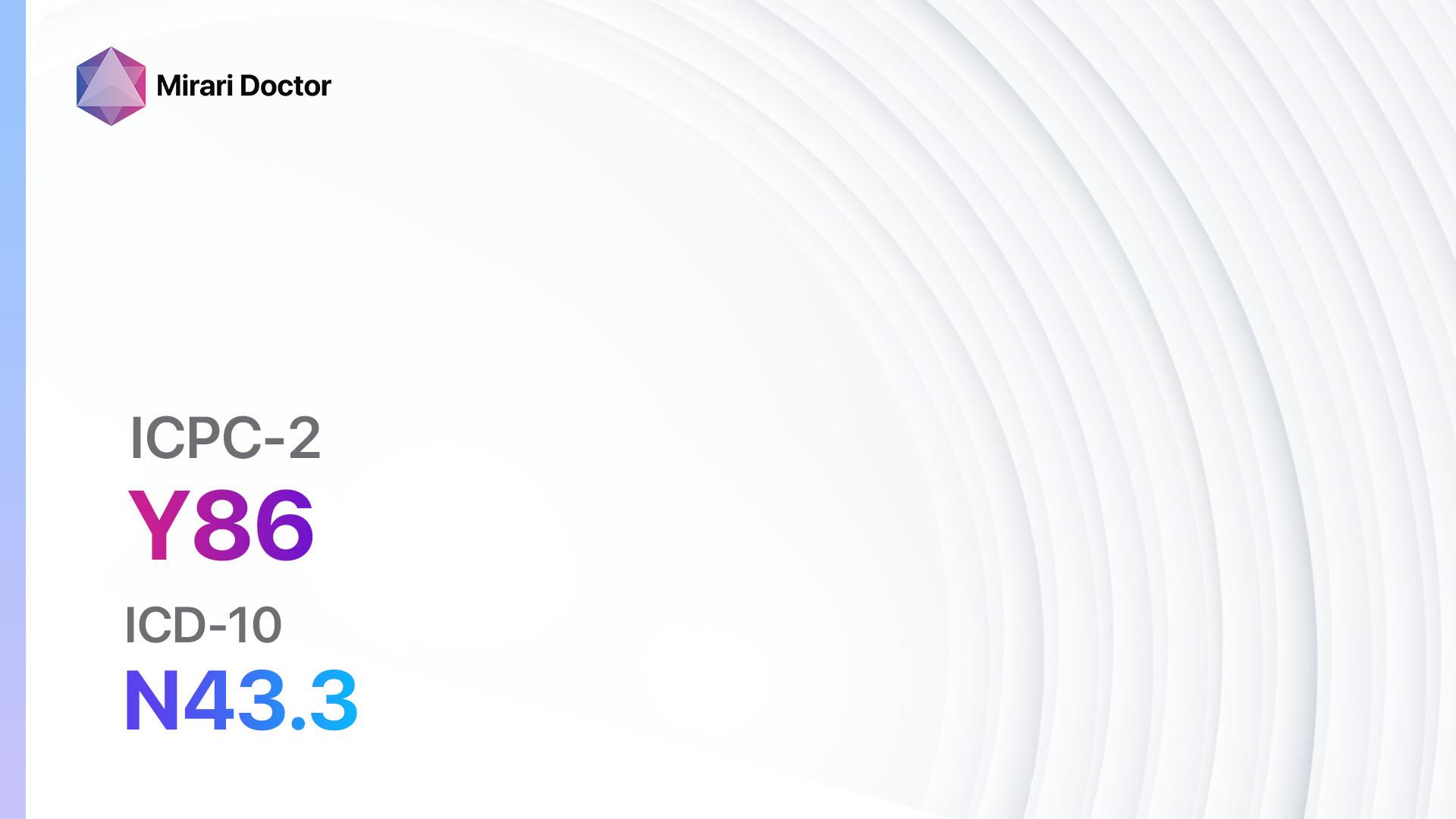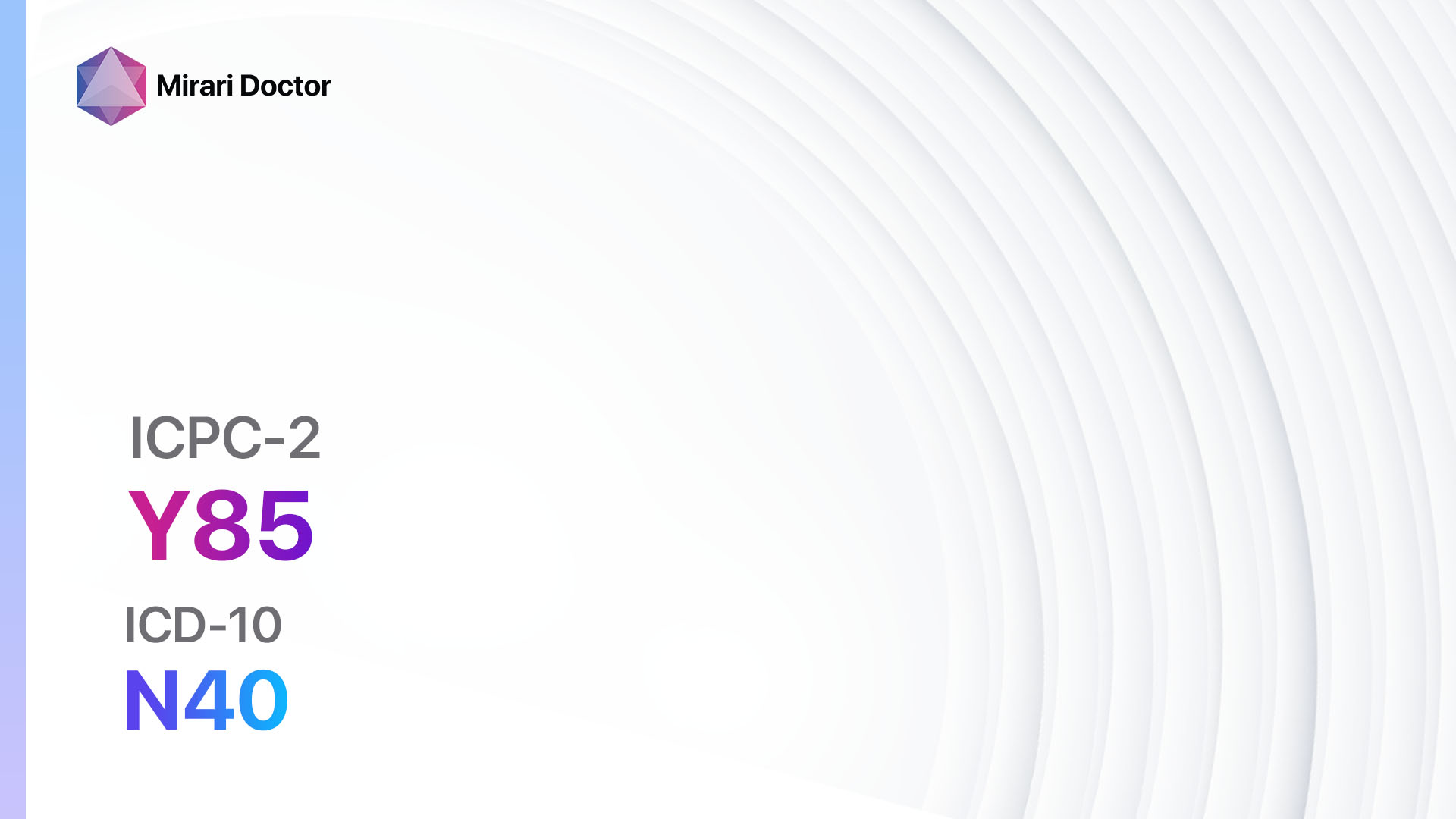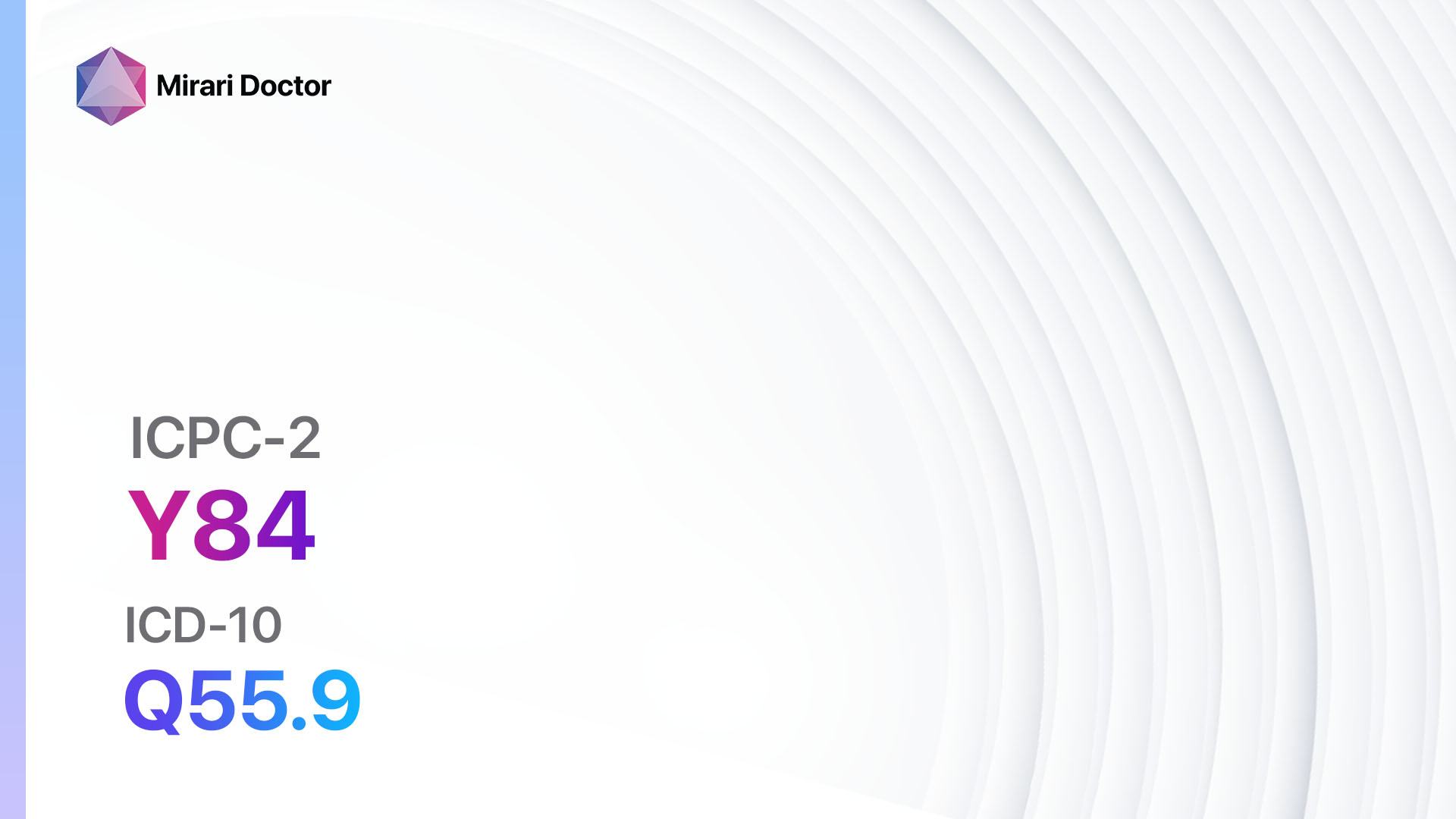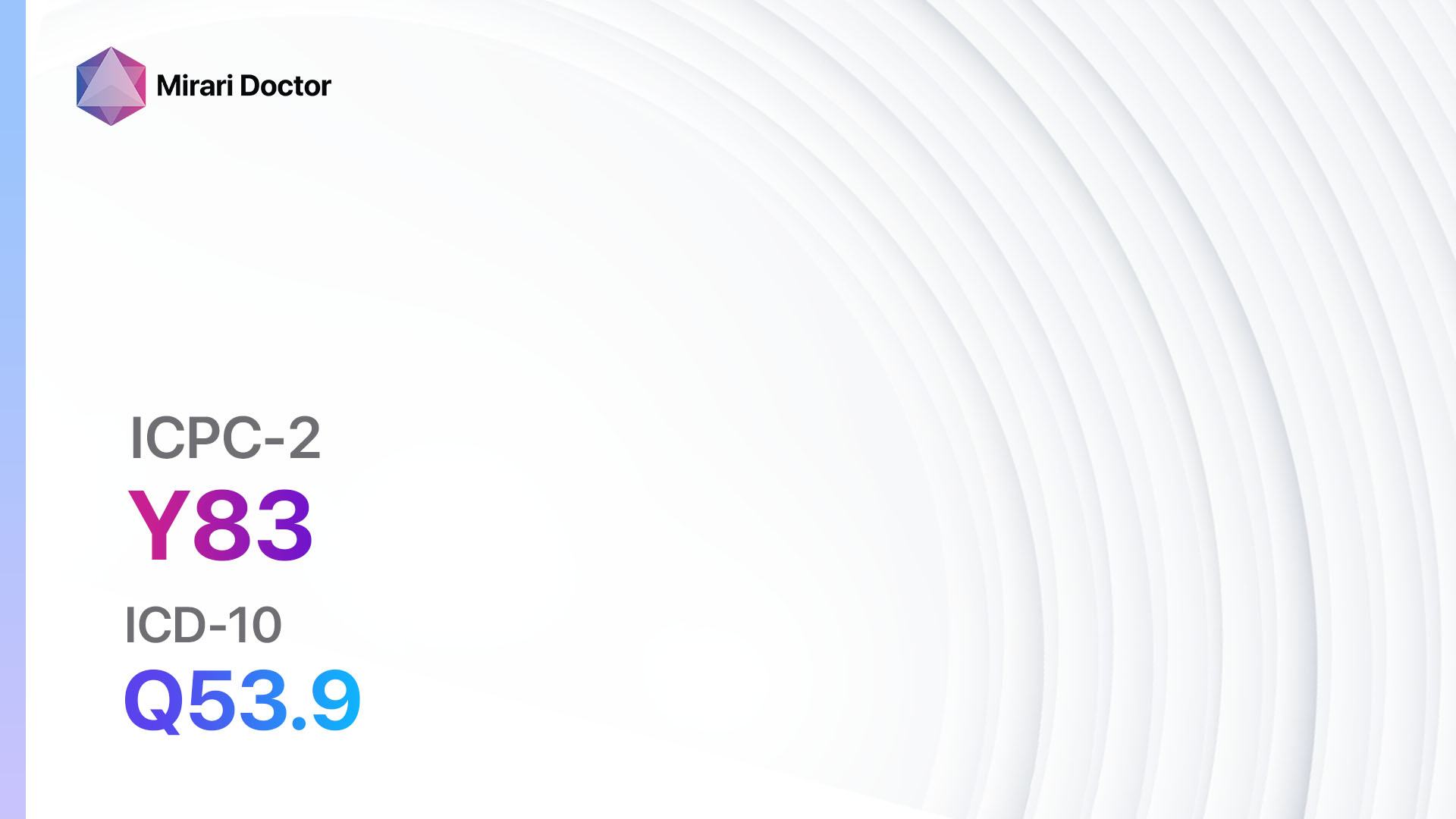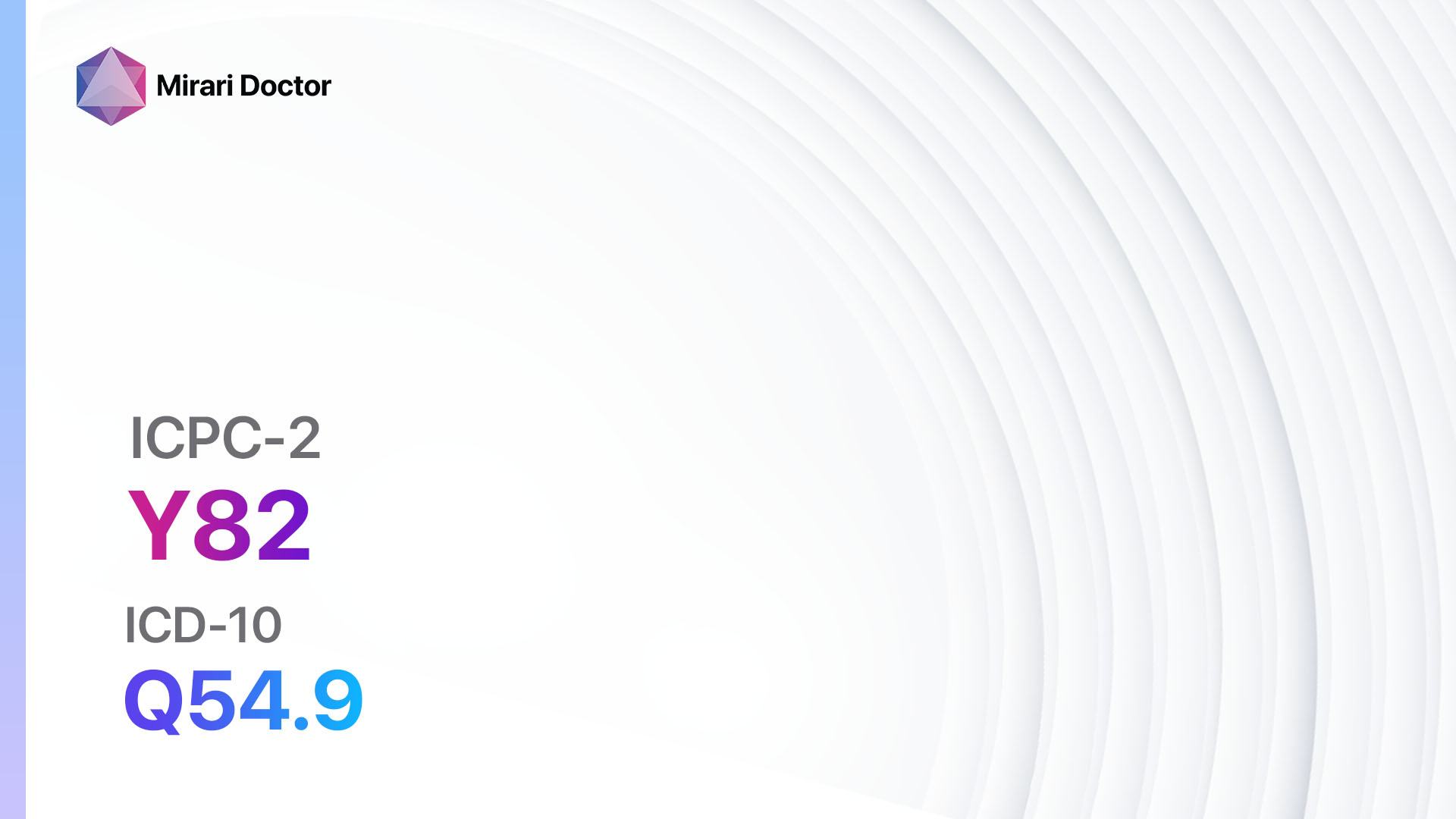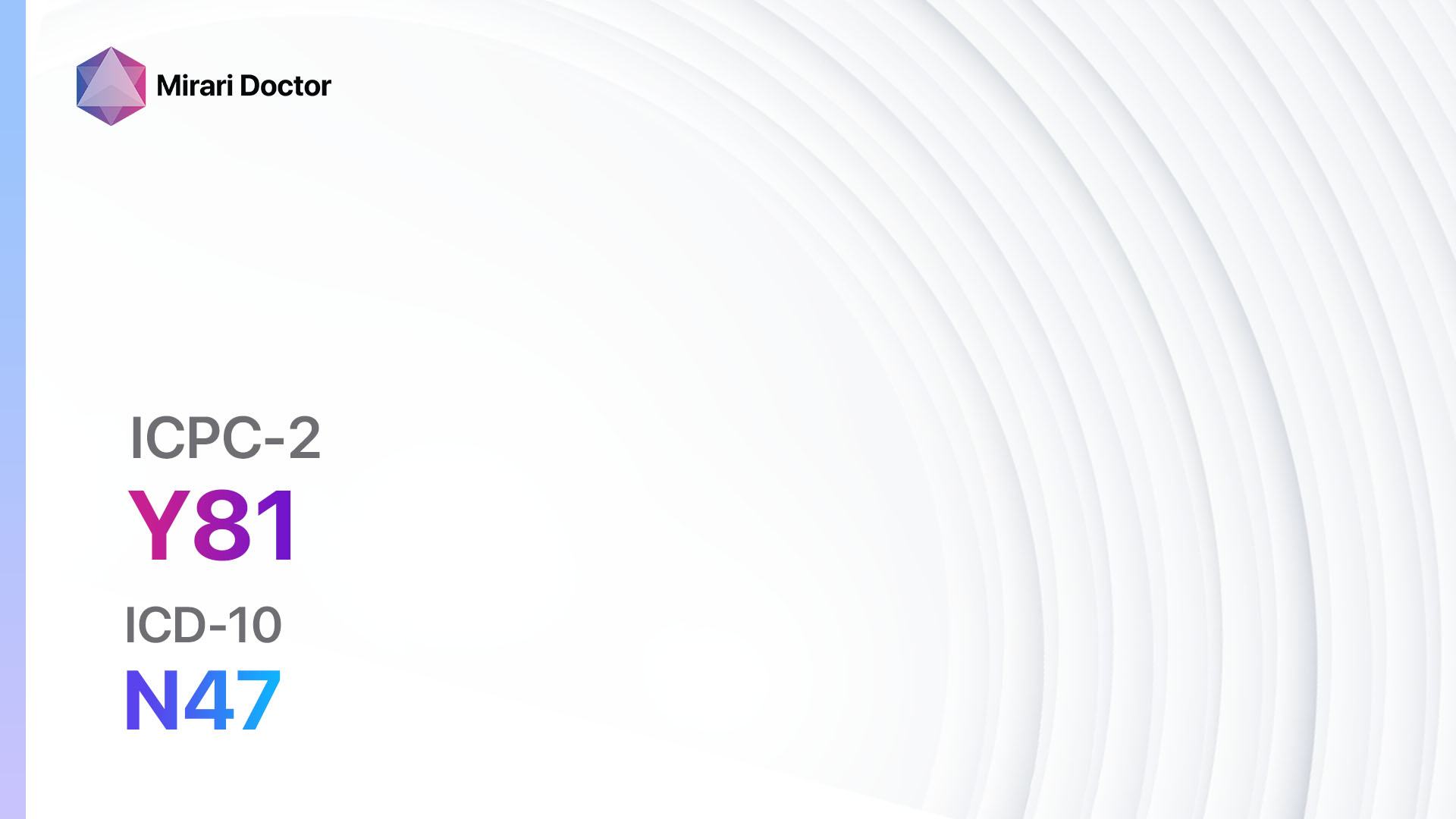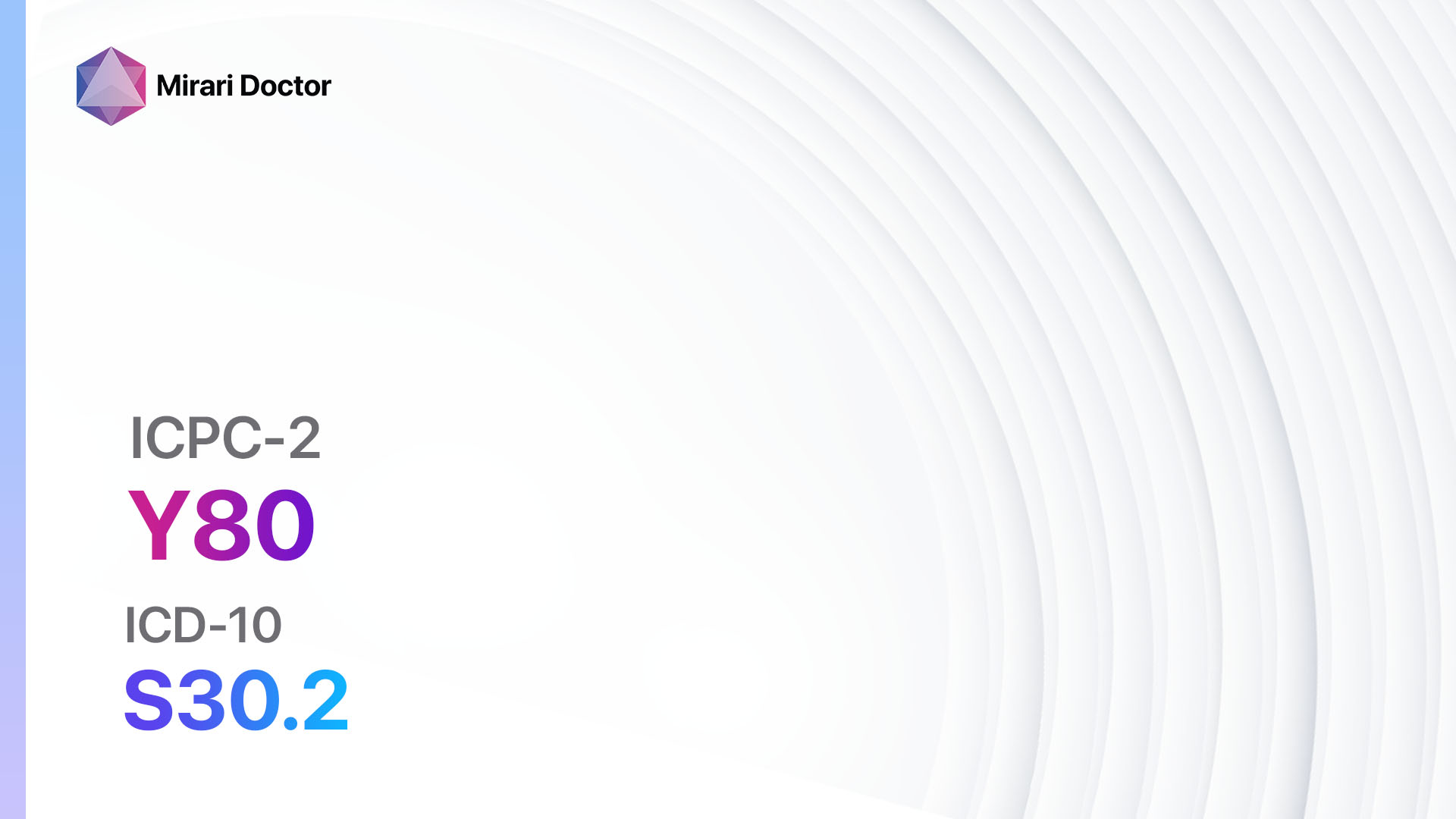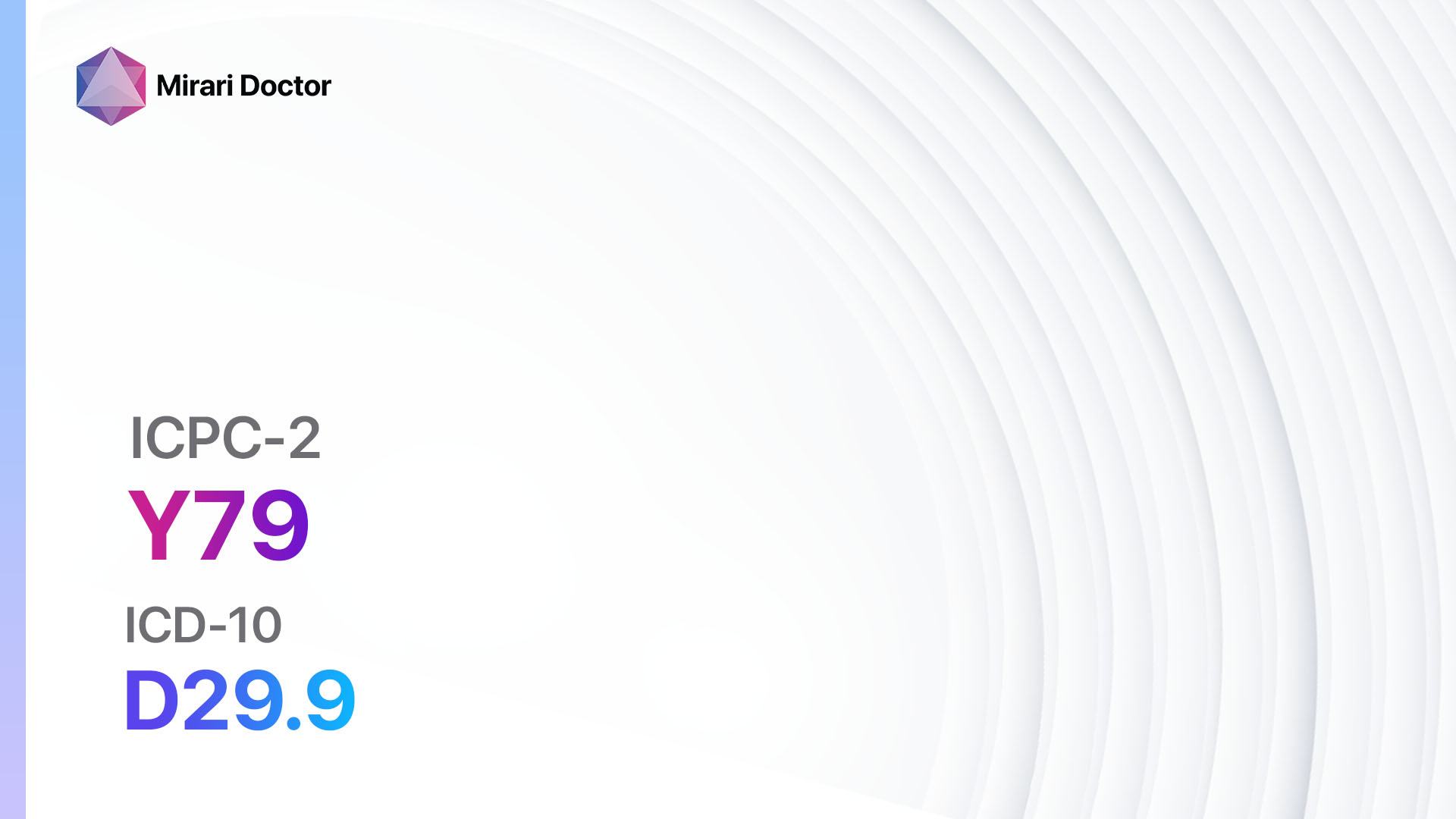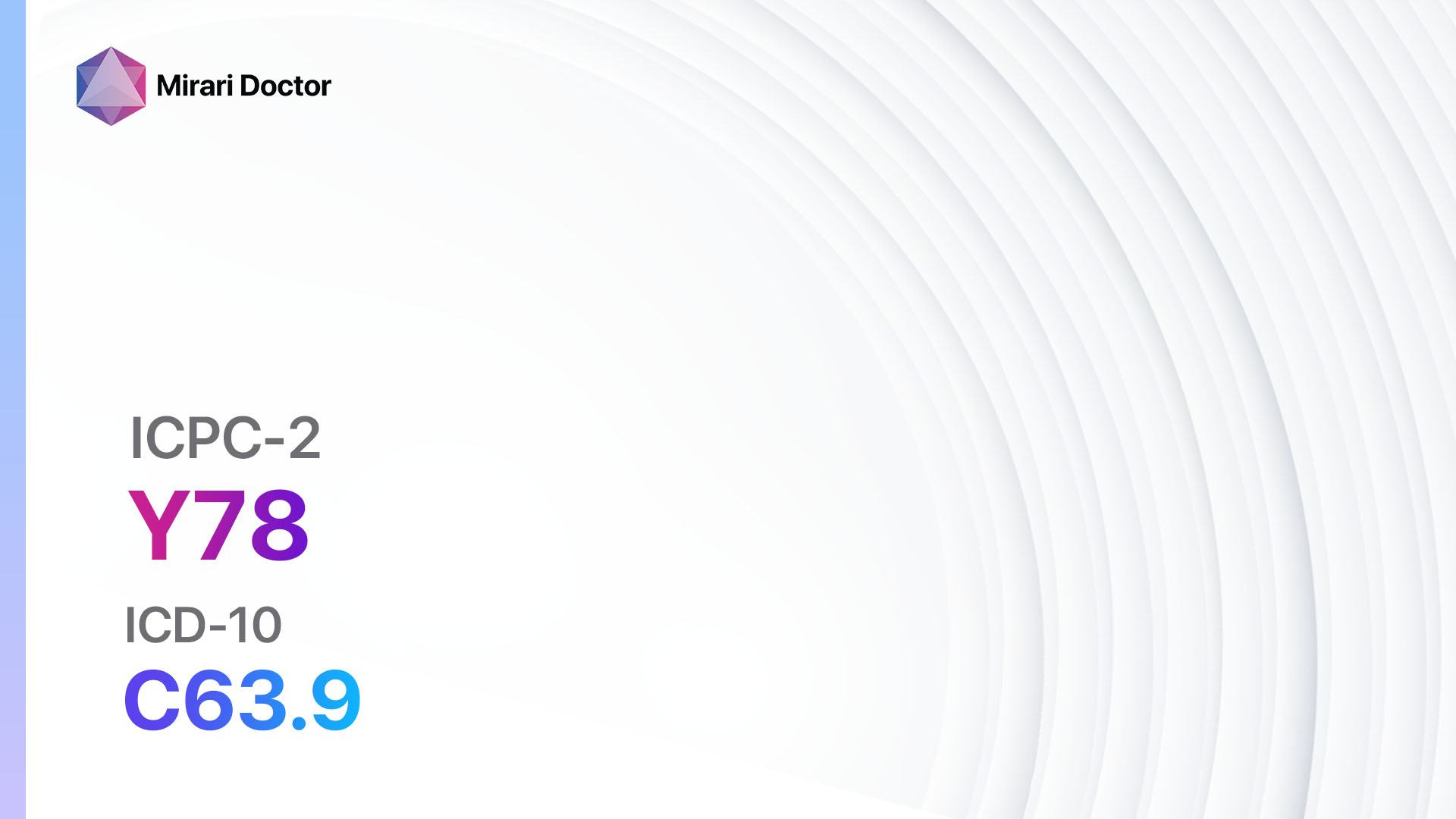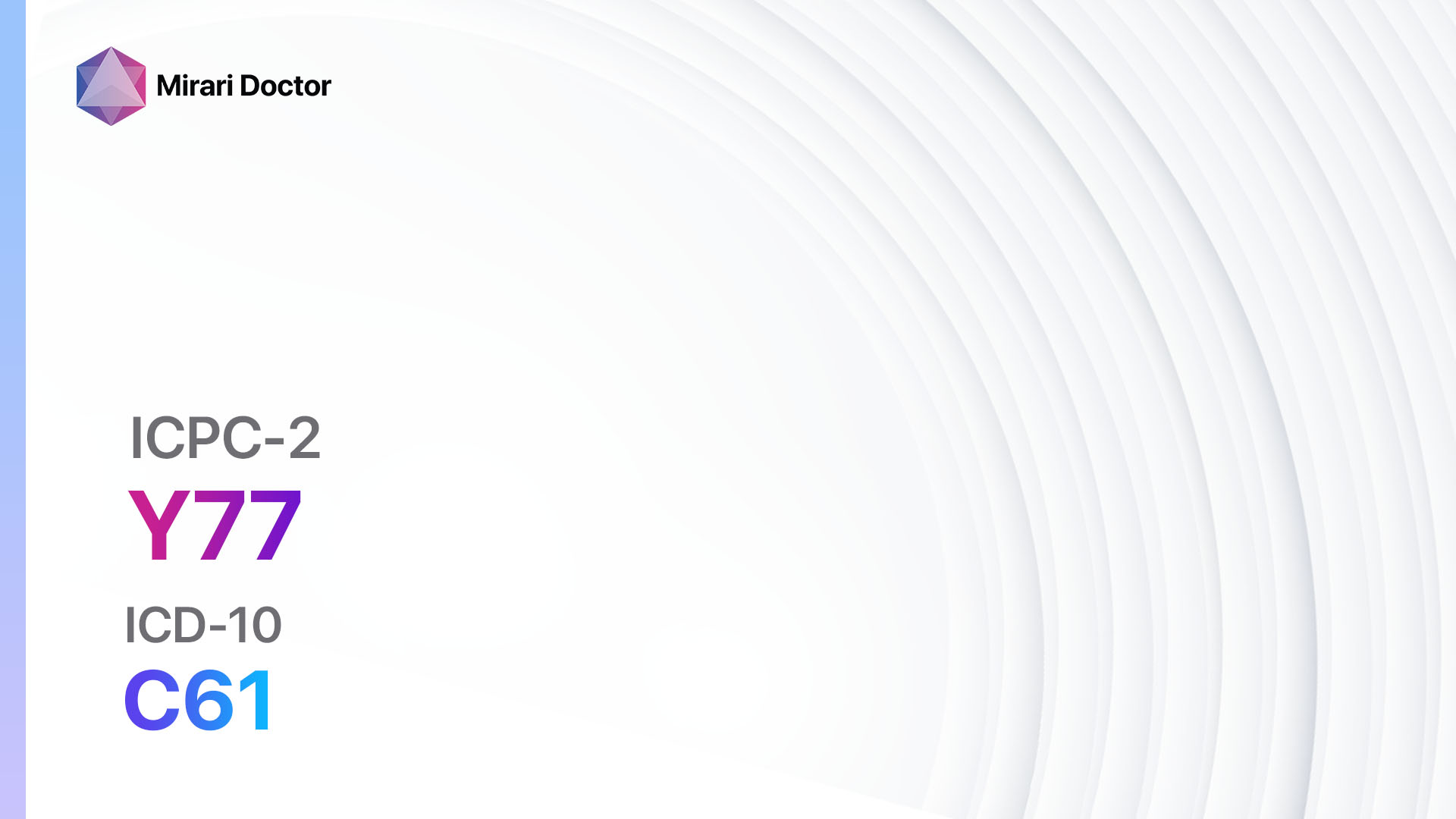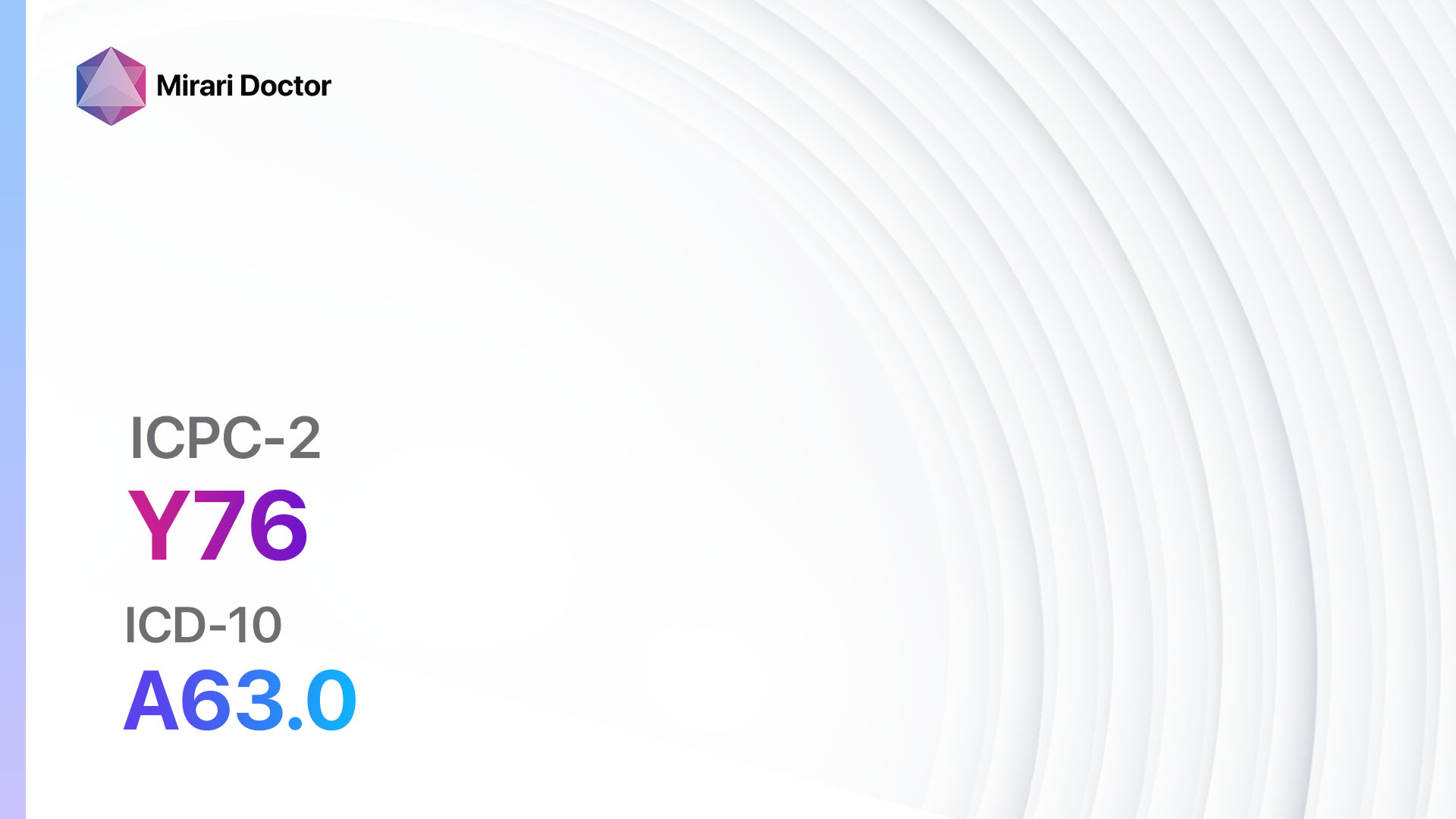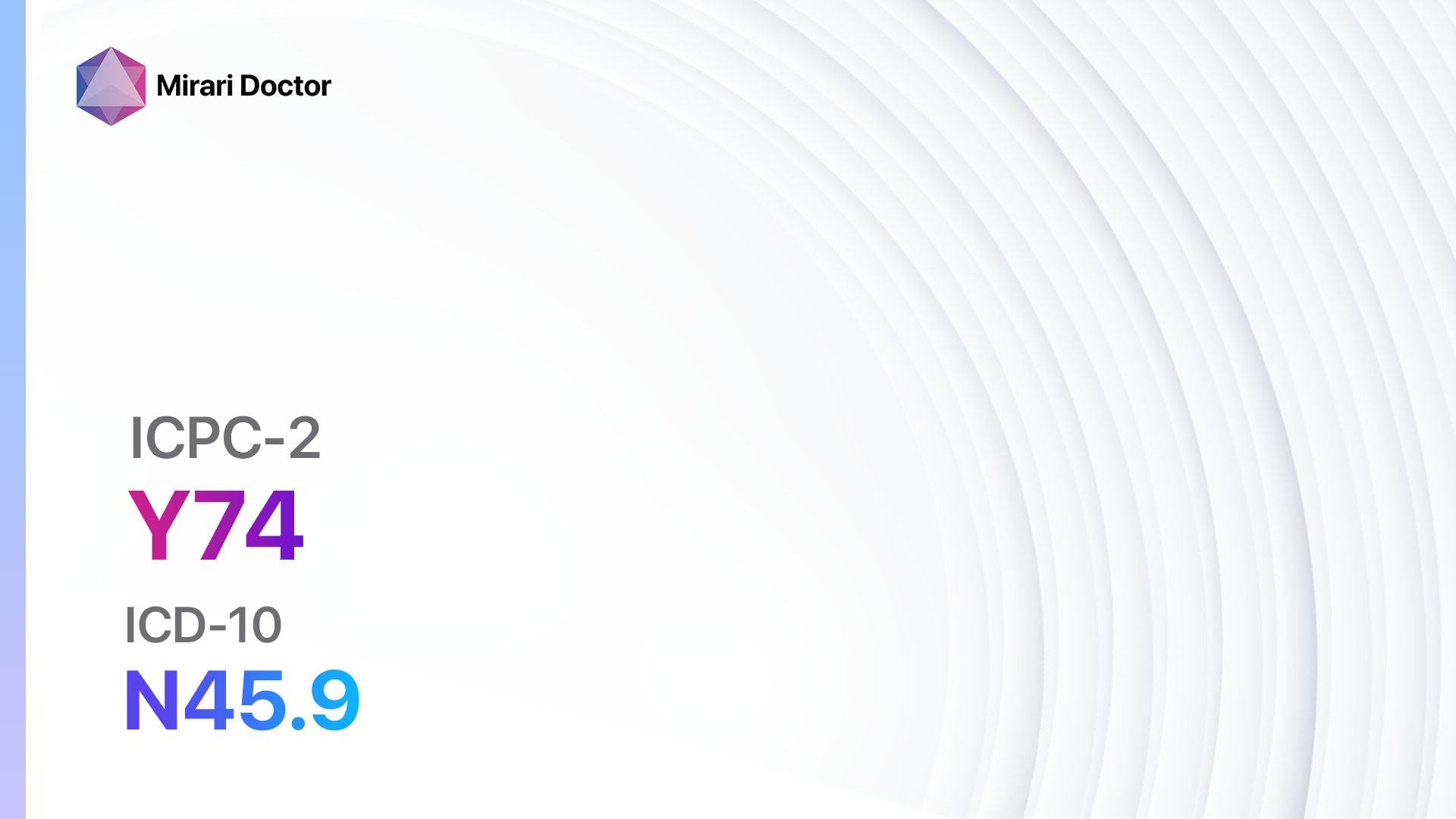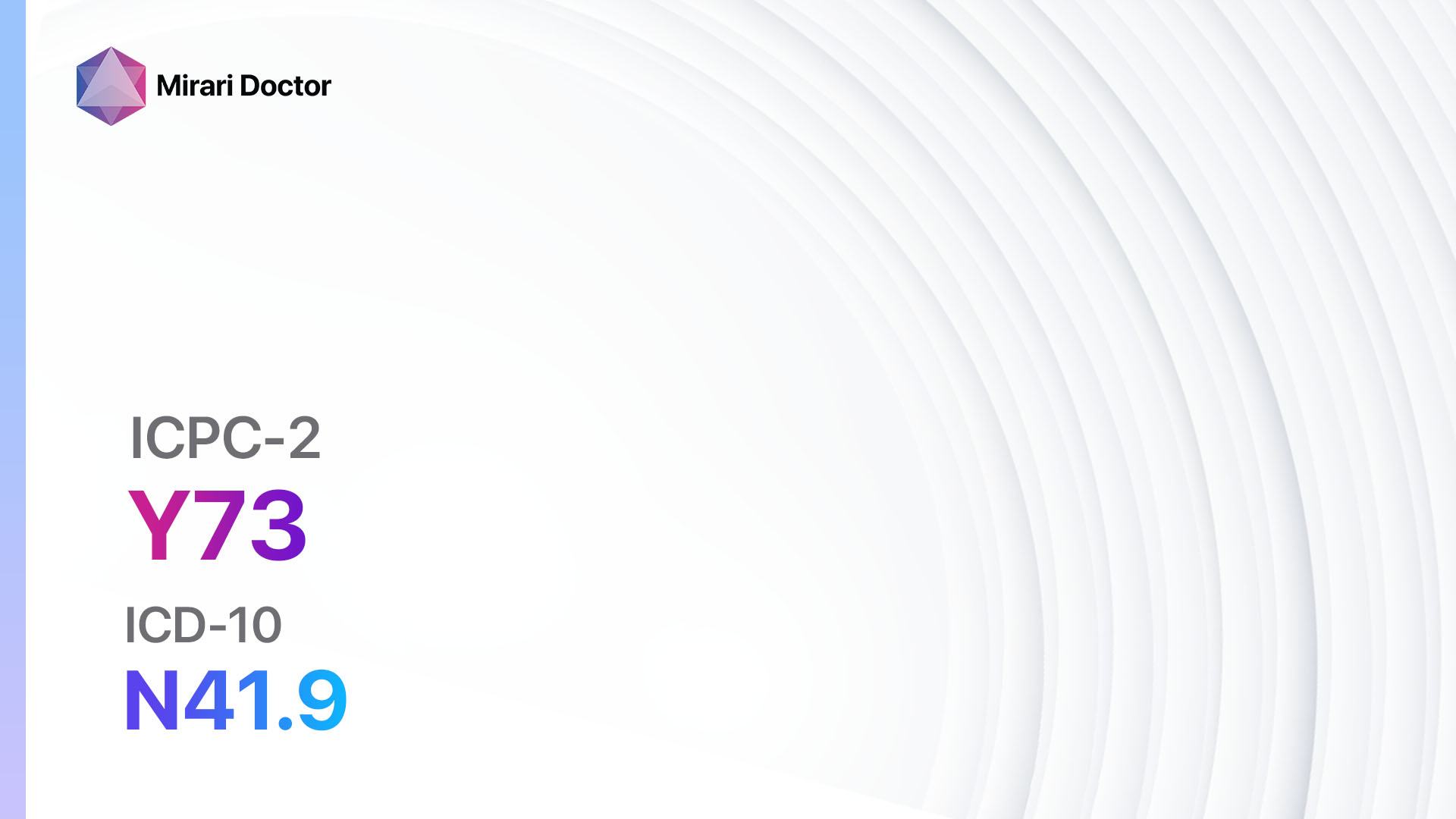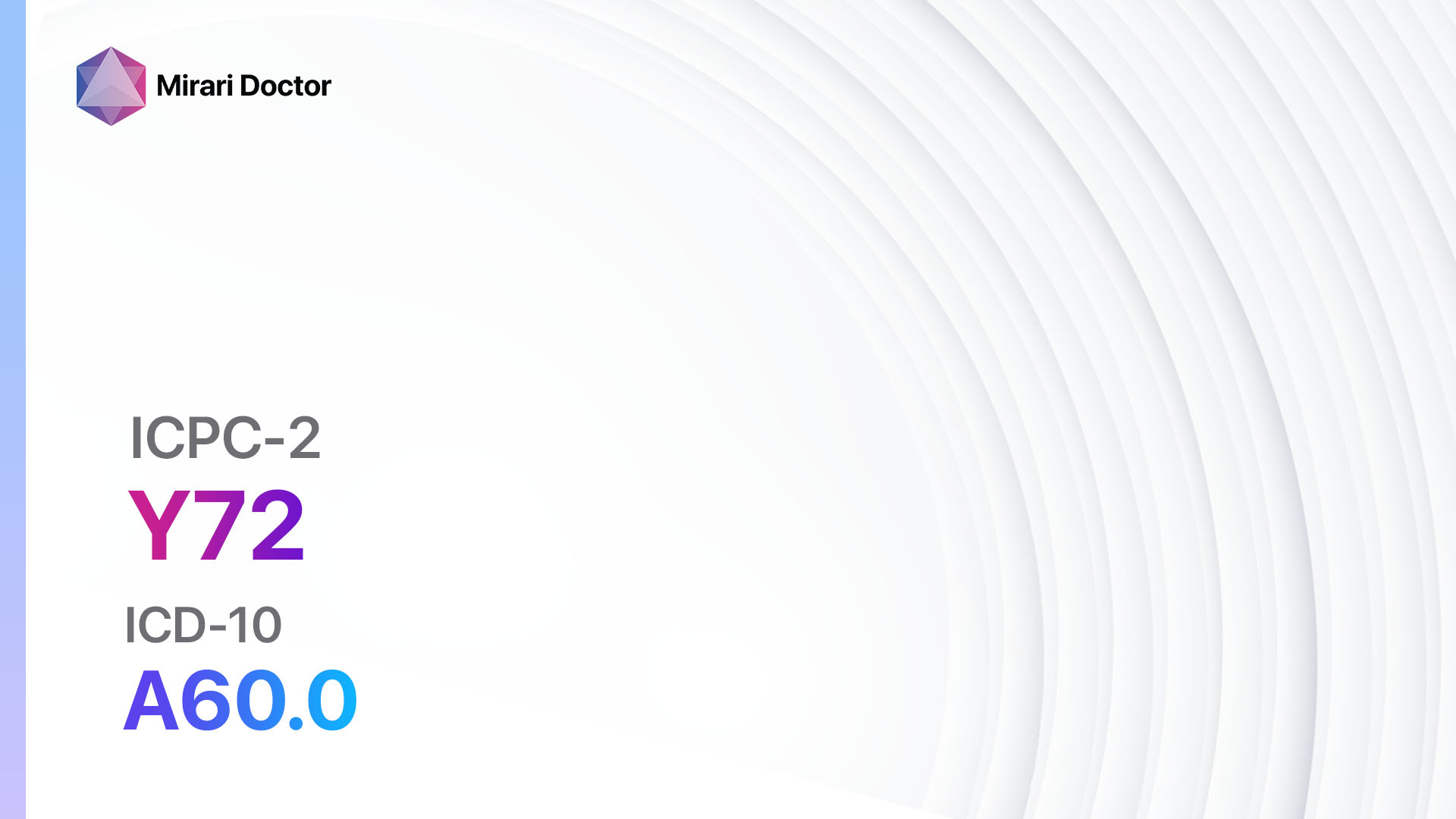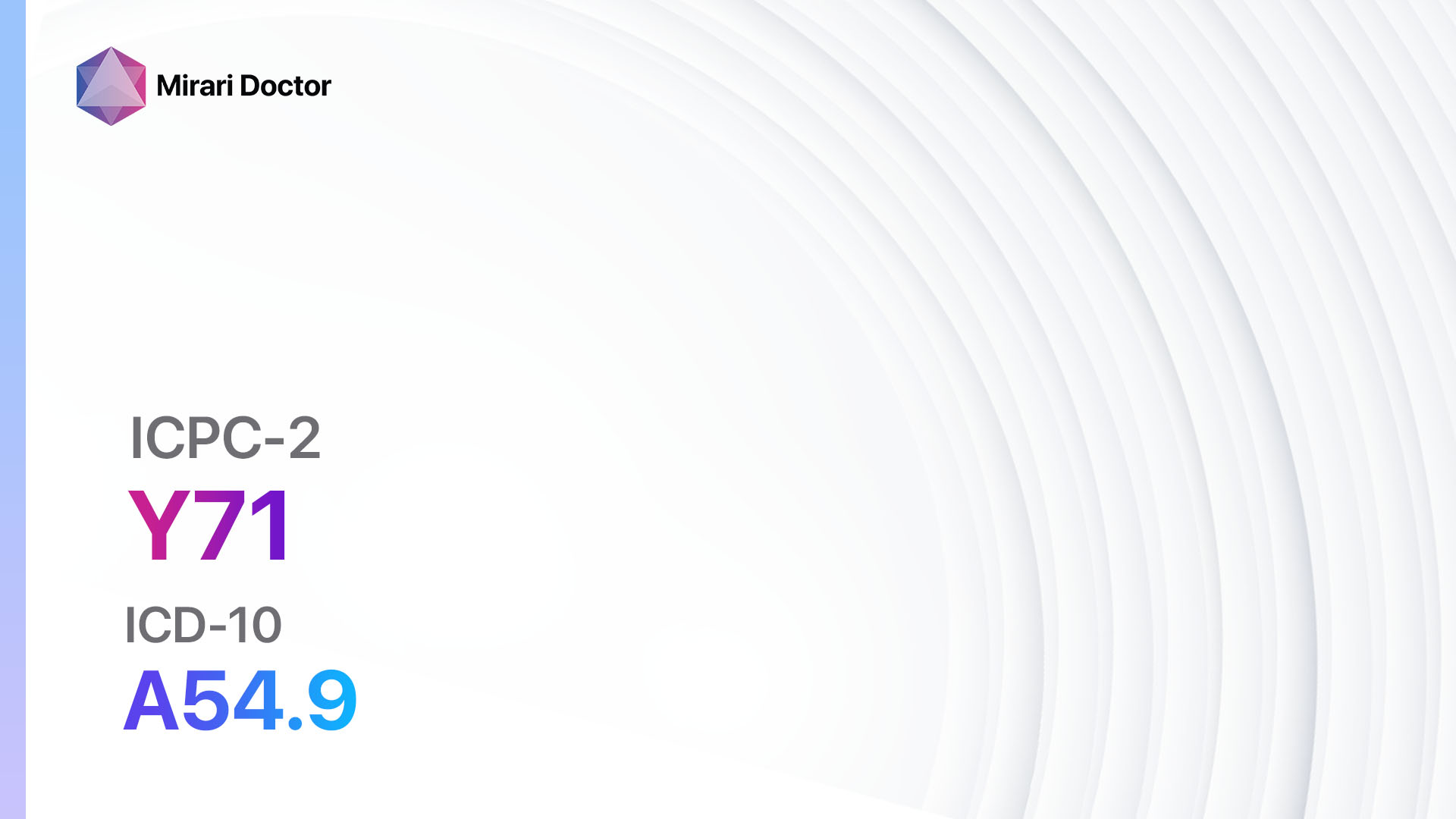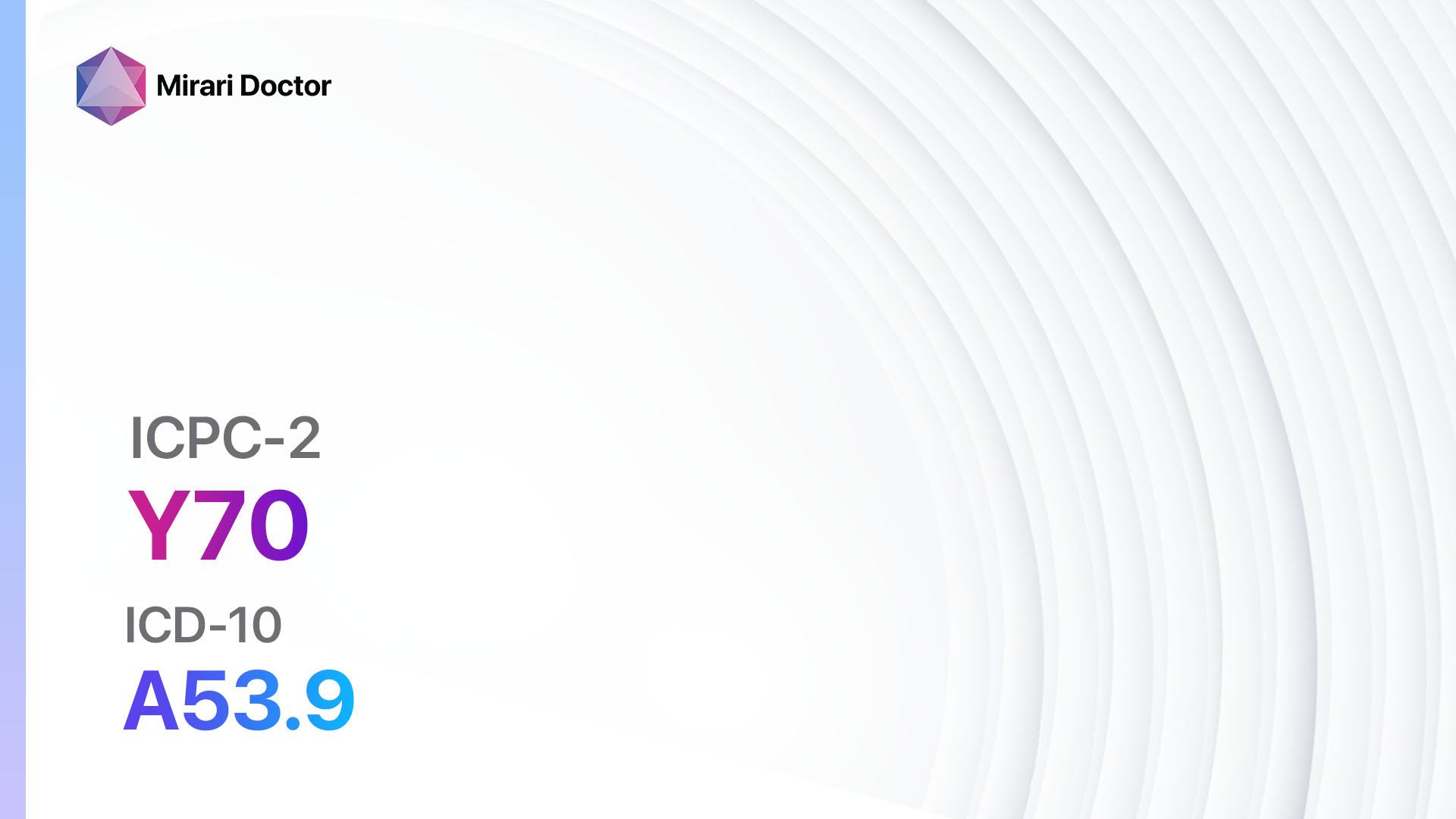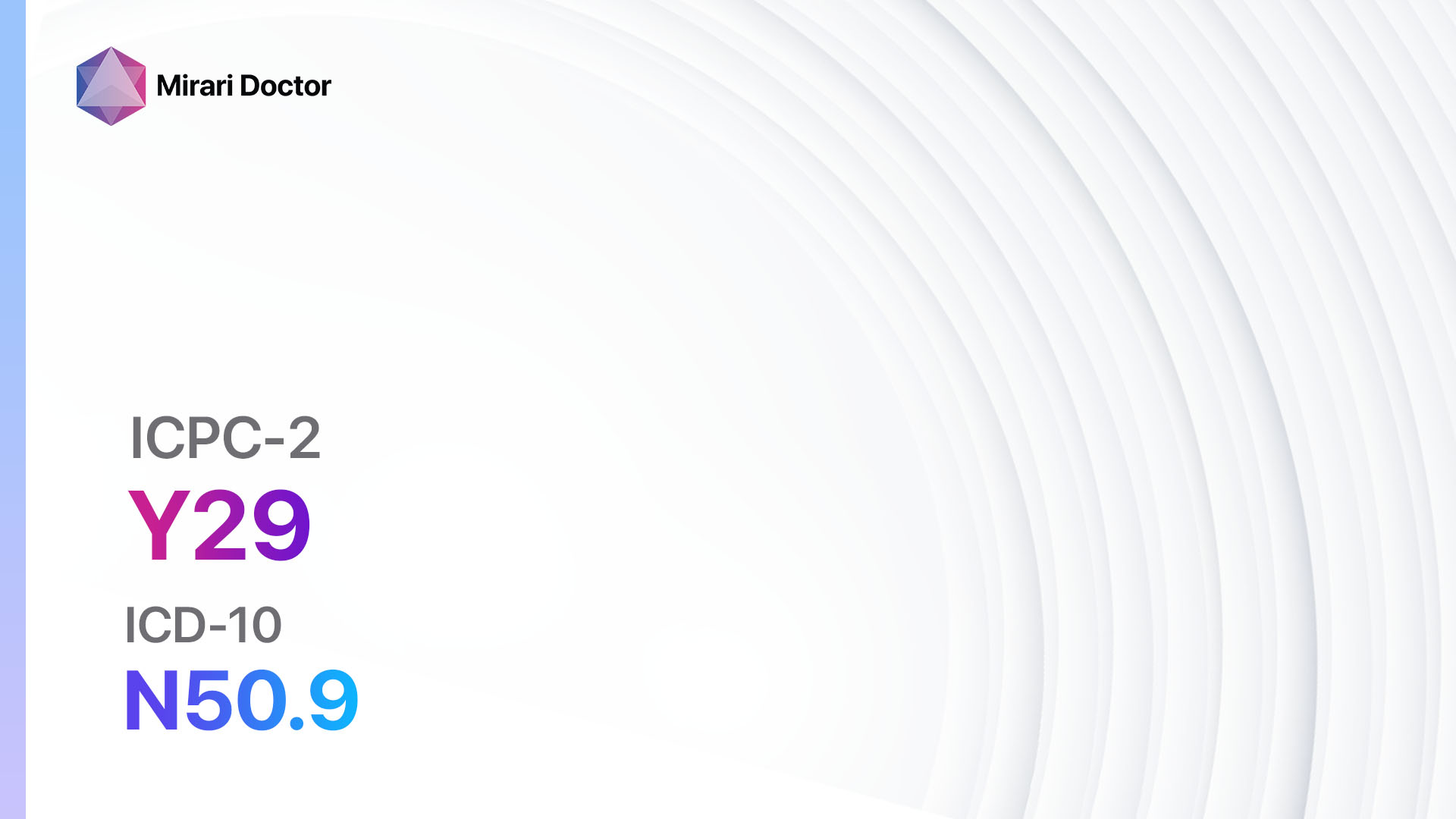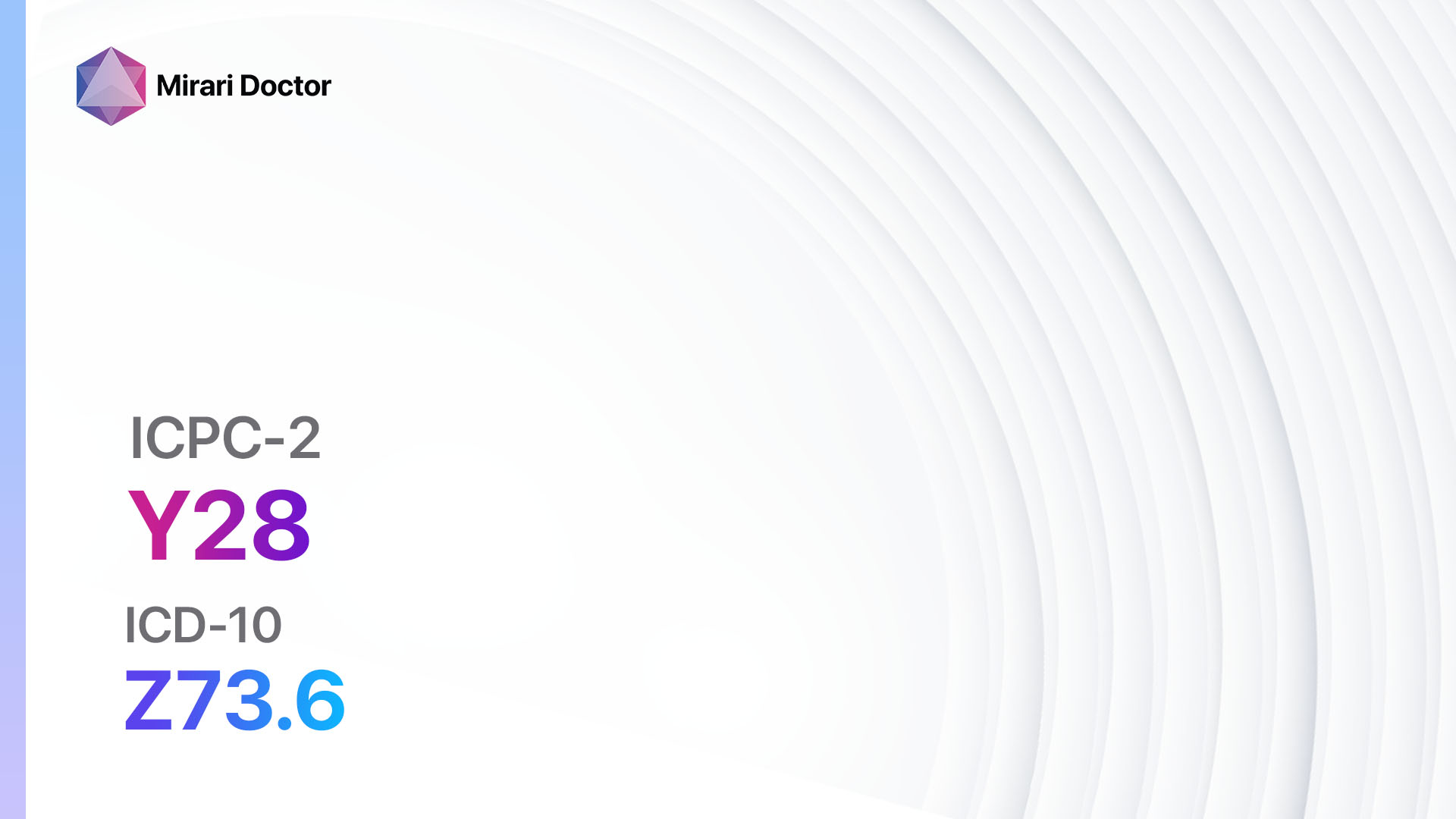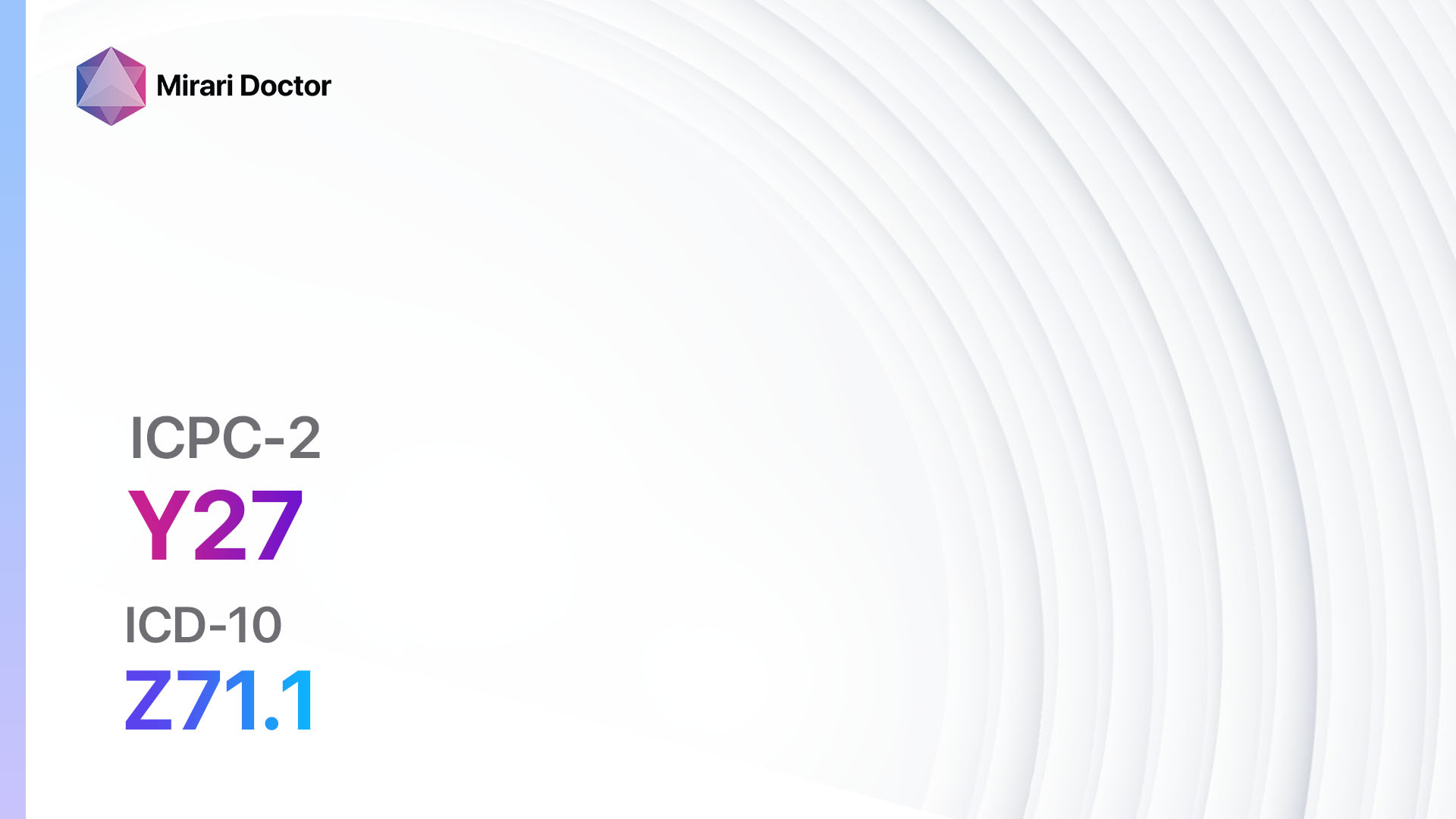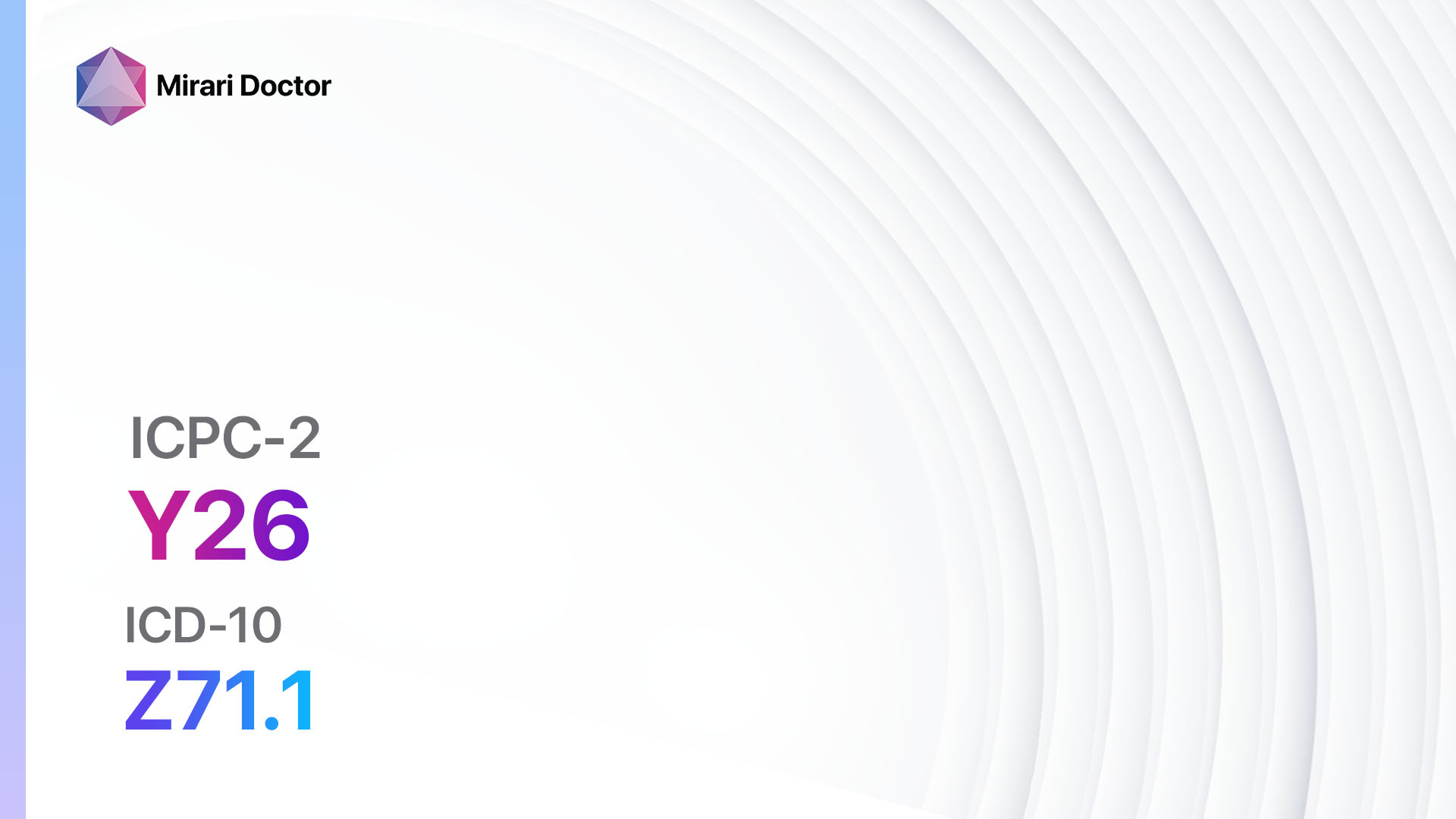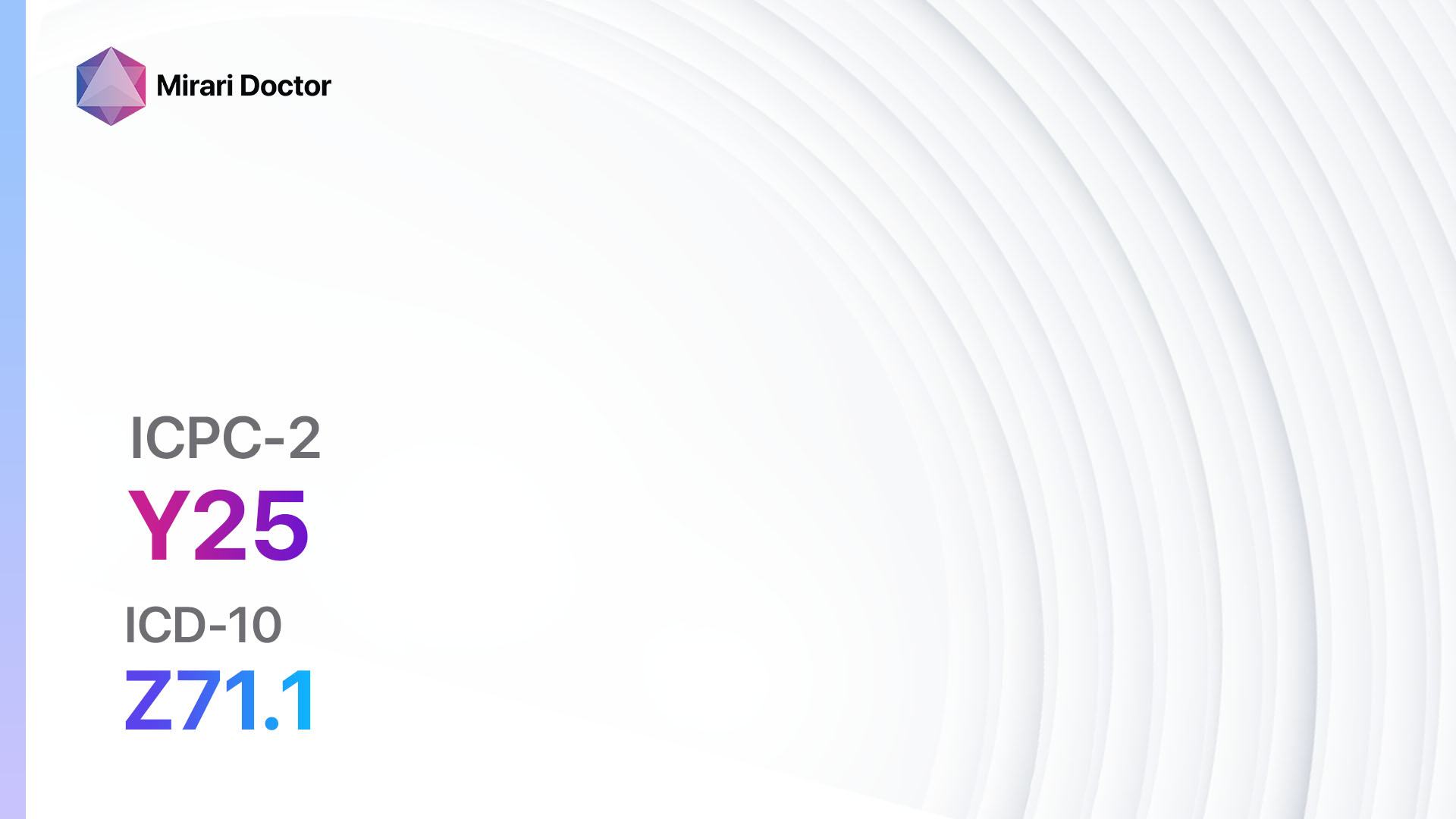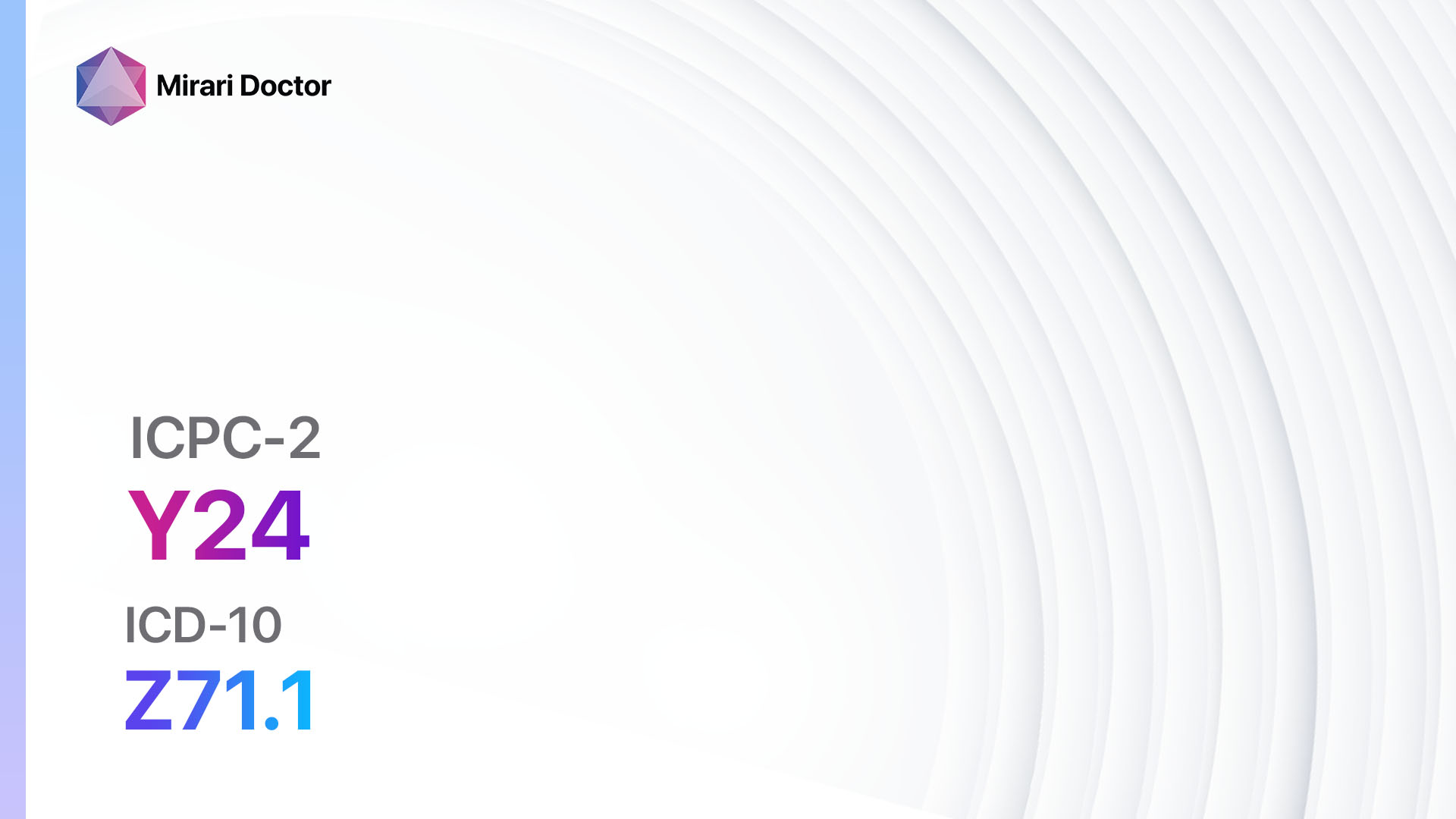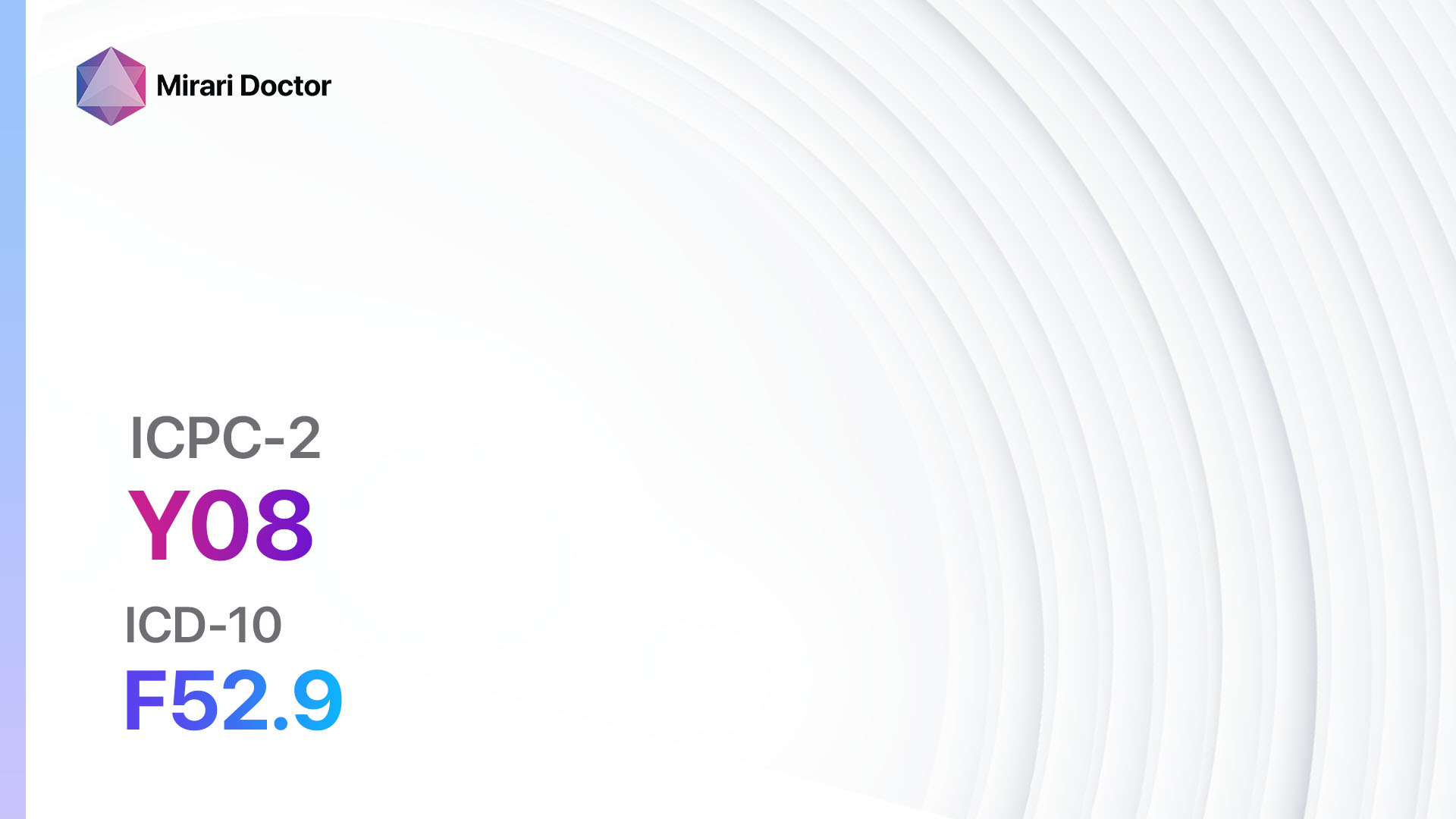
Introduction
Sexual dysfunction is a common condition that affects many men. It can have a significant impact on quality of life and can lead to relationship problems and psychological distress[1]. The aim of this guide is to provide a comprehensive overview of the symptoms, causes, diagnostic steps, possible interventions, and lifestyle interventions for sexual function symptoms/complaints in men.
Codes
- ICPC-2 Code: Y08 Sexual function symptom/complaint male other[2]
- ICD-10 Code: F52.9 Unspecified sexual dysfunction, not caused by organic disorder or disease[3]
Symptoms
- Erectile dysfunction: Inability to achieve or maintain an erection sufficient for sexual intercourse.
- Premature ejaculation: Ejaculation that occurs before or shortly after penetration, often with minimal stimulation.
- Decreased libido: Reduced interest in sexual activity.
- Delayed ejaculation: Difficulty or inability to ejaculate, despite normal sexual stimulation.
- Painful ejaculation: Pain or discomfort during ejaculation[4].
Causes
- Physical causes: These can include underlying medical conditions such as diabetes, high blood pressure, heart disease, hormonal imbalances, and neurological disorders.
- Psychological causes: Stress, anxiety, depression, and relationship problems can all contribute to sexual dysfunction.
- Medications: Certain medications, such as antidepressants, antihypertensives, and prostate medications, can cause sexual side effects.
- Lifestyle factors: Excessive alcohol consumption, smoking, and drug use can all affect sexual function[5].
Diagnostic Steps
Medical History
A comprehensive medical history should be obtained to gather relevant patient information. This should include:
- Risk factors: Ask about any medical conditions, such as diabetes or heart disease, that may contribute to sexual dysfunction.
- Medications: Inquire about any current medications that could be causing sexual side effects.
- Symptoms: Determine the specific symptoms experienced by the patient, including the frequency and severity[6].
Physical Examination
A thorough physical examination should be performed, focusing on specific signs or findings indicative of disease. The examination may include:
- Assessment of blood pressure and heart rate: High blood pressure and heart disease can contribute to sexual dysfunction.
- Neurological examination: Assessing the peripheral nerves and reflexes can help identify any underlying neurological disorders.
- Examination of the genitalia: This can help identify any physical abnormalities or signs of infection[7].
Laboratory Tests
Relevant laboratory tests may include:
- Blood tests: These can assess hormone levels, such as testosterone, as well as markers of underlying medical conditions.
- Urinalysis: This can help identify any urinary tract infections or other underlying conditions.
- Lipid profile: High cholesterol levels can contribute to cardiovascular disease, which may impact sexual function[8].
Diagnostic Imaging
Diagnostic imaging may be necessary in certain cases to visualize and assess disease. This may include:
- Ultrasound: This can help assess blood flow to the penis and identify any structural abnormalities.
- MRI or CT scan: These imaging modalities may be used to evaluate the pelvic region for any underlying anatomical or structural issues[9].
Other Tests
Additional diagnostic tests may be necessary based on clinical presentation. These may include:
- Psychosocial assessment: A psychological evaluation may be conducted to assess for any underlying psychological factors contributing to sexual dysfunction.
- Nocturnal penile tumescence (NPT) test: This test measures the frequency and duration of erections during sleep to help determine if the cause of erectile dysfunction is physical or psychological[10].
Follow-up and Patient Education
After the diagnostic steps have been completed, it is important to provide appropriate follow-up and patient education. This may include:
- Explaining the results of the diagnostic tests and their implications for treatment.
- Discussing treatment options, including both traditional and alternative interventions.
- Providing resources for further information or support, such as counseling or support groups.
Possible Interventions
Traditional Interventions
Medications:
Top 5 drugs for Sexual dysfunction in men:
- Sildenafil (Viagra):
- Cost : $8-$55 per pill.
- Contraindications : Use of nitrates, severe liver or kidney disease.
- Side effects : Headache, flushing, indigestion.
- Severe side effects : Priapism, sudden hearing loss, vision changes.
- Drug interactions: Nitrates, alpha-blockers.
- Warning : Use with caution in patients with cardiovascular disease.
- Tadalafil (Cialis):
- Cost : $10-$40 per pill.
- Contraindications : Use of nitrates, severe liver or kidney disease.
- Side effects : Headache, back pain, muscle aches.
- Severe side effects : Priapism, sudden hearing loss, vision changes.
- Drug interactions: Nitrates, alpha-blockers.
- Warning : Use with caution in patients with cardiovascular disease.
- Vardenafil (Levitra):
- Cost : $8-$40 per pill.
- Contraindications : Use of nitrates, severe liver or kidney disease.
- Side effects : Headache, flushing, stuffy or runny nose.
- Severe side effects : Priapism, sudden vision loss, heart attack symptoms.
- Drug interactions: Nitrates, alpha-blockers.
- Warning : Use with caution in patients with cardiovascular disease.
- Avanafil (Stendra):
- Cost : $10-$43 per pill.
- Contraindications : Use of nitrates, severe liver or kidney disease.
- Side effects : Headache, flushing, nasal congestion.
- Severe side effects : Priapism, sudden hearing loss, vision changes.
- Drug interactions: Nitrates, alpha-blockers.
- Warning : Use with caution in patients with cardiovascular disease.
- Testosterone replacement therapy (e.g., Androderm, Androgel):
- Cost : $50-$500 per month.
- Contraindications : Prostate or breast cancer, severe urinary tract symptoms.
- Side effects : Acne, fluid retention, increased red blood cell count.
- Severe side effects : Worsening of prostate cancer, liver problems.
- Drug interactions: Insulin, blood thinners.
- Warning : Regular monitoring of prostate-specific antigen (PSA) levels is required.
Alternative Drugs:
- Yohimbine: Derived from the bark of the Yohimbe tree, it may help improve erectile function. Cost: $30-$60 per month.
- Apomorphine: A dopamine agonist that can be used for the treatment of erectile dysfunction. Cost: $100-$200 per month.
- Alprostadil: Can be administered as an injection or suppository to help achieve an erection. Cost: $30-$150 per dose.
Surgical Procedures:
- Penile implant surgery: Involves the insertion of an inflatable or malleable prosthesis into the penis to achieve an erection. Cost : $15,000 to $40,000.
- Vascular surgery: In cases where blood flow to the penis is compromised, surgical procedures may be performed to improve blood flow. Cost : $10,000 to $30,000.
Alternative Interventions
- Acupuncture: May help improve blood flow and reduce sexual dysfunction. Cost: $60-$120 per session.
- Yoga and meditation: Can help reduce stress and improve overall well-being, potentially improving sexual function. Cost: Varies depending on the class or program.
- Herbal supplements: Some herbs, such as ginseng and horny goat weed, have been used traditionally to improve sexual function. Cost: Varies depending on the specific supplement.
- Pelvic floor exercises: Strengthening the pelvic floor muscles can improve erectile function. Cost: Free.
- Cognitive-behavioral therapy (CBT): Can help address any underlying psychological factors contributing to sexual dysfunction. Cost: $100-$200 per session.
Lifestyle Interventions
- Regular exercise: Engaging in regular physical activity can improve overall cardiovascular health and enhance sexual function. Cost: Varies depending on the chosen activity.
- Healthy diet: Consuming a balanced diet that is low in saturated fats, cholesterol, and processed foods can improve overall health and sexual function. Cost: Varies depending on food choices.
- Stress management: Finding healthy ways to manage stress, such as through relaxation techniques or hobbies, can improve sexual function. Cost: Varies depending on chosen stress management techniques.
- Limiting alcohol consumption: Excessive alcohol consumption can contribute to sexual dysfunction. Cost: Varies depending on alcohol consumption habits.
- Smoking cessation: Quitting smoking can improve overall health and sexual function. Cost: Varies depending on chosen smoking cessation methods.
It is important to note that the cost ranges provided are approximate and may vary depending on the location and availability of the interventions. It is recommended to consult with healthcare professionals for personalized treatment plans and cost estimates.
Mirari Cold Plasma Alternative Intervention
Understanding Mirari Cold Plasma
- Safe and Non-Invasive Treatment: Mirari Cold Plasma is a safe and non-invasive treatment option for various skin conditions. It does not require incisions, minimizing the risk of scarring, bleeding, or tissue damage.
- Efficient Extraction of Foreign Bodies: Mirari Cold Plasma facilitates the removal of foreign bodies from the skin by degrading and dissociating organic matter, allowing easier access and extraction.
- Pain Reduction and Comfort: Mirari Cold Plasma has a local analgesic effect, providing pain relief during the treatment, making it more comfortable for the patient.
- Reduced Risk of Infection: Mirari Cold Plasma has antimicrobial properties, effectively killing bacteria and reducing the risk of infection.
- Accelerated Healing and Minimal Scarring: Mirari Cold Plasma stimulates wound healing and tissue regeneration, reducing healing time and minimizing the formation of scars.
Mirari Cold Plasma Prescription
Video instructions for using Mirari Cold Plasma Device – Y08 Sexual function symptom/complaint male other (ICD-10:F52.9)
| Mild | Moderate | Severe |
| Mode setting: 1 (Infection) Location: 0 (Localized) Morning: 15 minutes, Evening: 15 minutes |
Mode setting: 1 (Infection) Location: 0 (Localized) Morning: 30 minutes, Lunch: 30 minutes, Evening: 30 minutes |
Mode setting: 1 (Infection) Location: 0 (Localized) Morning: 30 minutes, Lunch: 30 minutes, Evening: 30 minutes |
| Mode setting: 2 (Wound Healing) Location: 0 (Localized) Morning: 15 minutes, Evening: 15 minutes |
Mode setting: 2 (Wound Healing) Location: 0 (Localized) Morning: 30 minutes, Lunch: 30 minutes, Evening: 30 minutes |
Mode setting: 2 (Wound Healing) Location: 0 (Localized) Morning: 30 minutes, Lunch: 30 minutes, Evening: 30 minutes |
| Mode setting: 5 (Prostatitis Therapy) Location: 2 (Prostate & Uterus) Morning: 15 minutes, Evening: 15 minutes |
Mode setting: 5 (Prostatitis Therapy) Location: 2 (Prostate & Uterus) Morning: 30 minutes, Lunch: 30 minutes, Evening: 30 minutes |
Mode setting: 5 (Prostatitis Therapy) Location: 2 (Prostate & Uterus) Morning: 30 minutes, Lunch: 30 minutes, Evening: 30 minutes |
| Mode setting: 7 (Immunotherapy) Location: 1 (Sacrum) Morning: 15 minutes, Evening: 15 minutes |
Mode setting: 7 (Immunotherapy) Location: 1 (Sacrum) Morning: 30 minutes, Lunch: 30 minutes, Evening: 30 minutes |
Mode setting: 7 (Immunotherapy) Location: 1 (Sacrum) Morning: 30 minutes, Lunch: 30 minutes, Evening: 30 minutes |
| Total Morning: 60 minutes approx. $10 USD, Evening: 60 minutes approx. $10 USD |
Total Morning: 120 minutes approx. $20 USD, Lunch: 120 minutes approx. $20 USD, Evening: 120 minutes approx. $20 USD, |
Total Morning: 120 minutes approx. $20 USD, Lunch: 120 minutes approx. $20 USD, Evening: 120 minutes approx. $20 USD, |
| Usual treatment for 7-60 days approx. $140 USD – $1200 USD | Usual treatment for 6-8 weeks approx. $2,520 USD – $3,360 USD |
Usual treatment for 3-6 months approx. $5,400 USD – $10,800 USD
|
 |
|
Use the Mirari Cold Plasma device to treat Sexual function sympt./complt.(m) effectively.
WARNING: MIRARI COLD PLASMA IS DESIGNED FOR THE HUMAN BODY WITHOUT ANY ARTIFICIAL OR THIRD PARTY PRODUCTS. USE OF OTHER PRODUCTS IN COMBINATION WITH MIRARI COLD PLASMA MAY CAUSE UNPREDICTABLE EFFECTS, HARM OR INJURY. PLEASE CONSULT A MEDICAL PROFESSIONAL BEFORE COMBINING ANY OTHER PRODUCTS WITH USE OF MIRARI.
Step 1: Cleanse the Skin
- Start by cleaning the affected area of the skin with a gentle cleanser or mild soap and water. Gently pat the area dry with a clean towel.
Step 2: Prepare the Mirari Cold Plasma device
- Ensure that the Mirari Cold Plasma device is fully charged or has fresh batteries as per the manufacturer’s instructions. Make sure the device is clean and in good working condition.
- Switch on the Mirari device using the power button or by following the specific instructions provided with the device.
- Some Mirari devices may have adjustable settings for intensity or treatment duration. Follow the manufacturer’s instructions to select the appropriate settings based on your needs and the recommended guidelines.
Step 3: Apply the Device
- Place the Mirari device in direct contact with the affected area of the skin. Gently glide or hold the device over the skin surface, ensuring even coverage of the area experiencing.
- Slowly move the Mirari device in a circular motion or follow a specific pattern as indicated in the user manual. This helps ensure thorough treatment coverage.
Step 4: Monitor and Assess:
- Keep track of your progress and evaluate the effectiveness of the Mirari device in managing your Sexual function sympt./complt.(m). If you have any concerns or notice any adverse reactions, consult with your health care professional.
Note
This guide is for informational purposes only and should not replace the advice of a medical professional. Always consult with your healthcare provider or a qualified medical professional for personal advice, diagnosis, or treatment. Do not solely rely on the information presented here for decisions about your health. Use of this information is at your own risk. The authors of this guide, nor any associated entities or platforms, are not responsible for any potential adverse effects or outcomes based on the content.
Mirari Cold Plasma System Disclaimer
- Purpose: The Mirari Cold Plasma System is a Class 2 medical device designed for use by trained healthcare professionals. It is registered for use in Thailand and Vietnam. It is not intended for use outside of these locations.
- Informational Use: The content and information provided with the device are for educational and informational purposes only. They are not a substitute for professional medical advice or care.
- Variable Outcomes: While the device is approved for specific uses, individual outcomes can differ. We do not assert or guarantee specific medical outcomes.
- Consultation: Prior to utilizing the device or making decisions based on its content, it is essential to consult with a Certified Mirari Tele-Therapist and your medical healthcare provider regarding specific protocols.
- Liability: By using this device, users are acknowledging and accepting all potential risks. Neither the manufacturer nor the distributor will be held accountable for any adverse reactions, injuries, or damages stemming from its use.
- Geographical Availability: This device has received approval for designated purposes by the Thai and Vietnam FDA. As of now, outside of Thailand and Vietnam, the Mirari Cold Plasma System is not available for purchase or use.
References
- Shamloul R, Ghanem H. Erectile dysfunction. Lancet. 2013;381(9861):153-165.
- World Organization of Family Doctors (WONCA). International Classification of Primary Care, Second edition (ICPC-2). Oxford University Press, 1998.
- World Health Organization. International Statistical Classification of Diseases and Related Health Problems, 10th Revision (ICD-10). Geneva: WHO, 2019.
- McCabe MP, Sharlip ID, Lewis R, et al. Incidence and prevalence of sexual dysfunction in women and men: a consensus statement from the Fourth International Consultation on Sexual Medicine 2015. J Sex Med. 2016;13(2):144-152.
- Hatzimouratidis K, Giuliano F, Moncada I, et al. EAU guidelines on erectile dysfunction, premature ejaculation, penile curvature and priapism. Eur Urol. 2016;70(2):e1-e17.
- Bhasin S, Cunningham GR, Hayes FJ, et al. Testosterone therapy in men with androgen deficiency syndromes: an Endocrine Society clinical practice guideline. J Clin Endocrinol Metab. 2010;95(6):2536-2559.
- Burnett AL, Nehra A, Breau RH, et al. Erectile Dysfunction: AUA Guideline. J Urol. 2018;200(3):633-641.
- Feldman HA, Goldstein I, Hatzichristou DG, Krane RJ, McKinlay JB. Impotence and its medical and psychosocial correlates: results of the Massachusetts Male Aging Study. J Urol. 1994;151(1):54-61.
- Cokkinos DD, Antypa E, Tserotas P, et al. Emergency ultrasound of the scrotum: A review of the commonest pathologic conditions. Curr Probl Diagn Radiol. 2011;40(1):1-14.
- Moul JW, Bauer JJ, Dhir R, et al. Nocturnal penile tumescence and rigidity testing in bicycling patrol officers. J Androl. 1998;19(4):446-451.
Related articles
Made in USA


